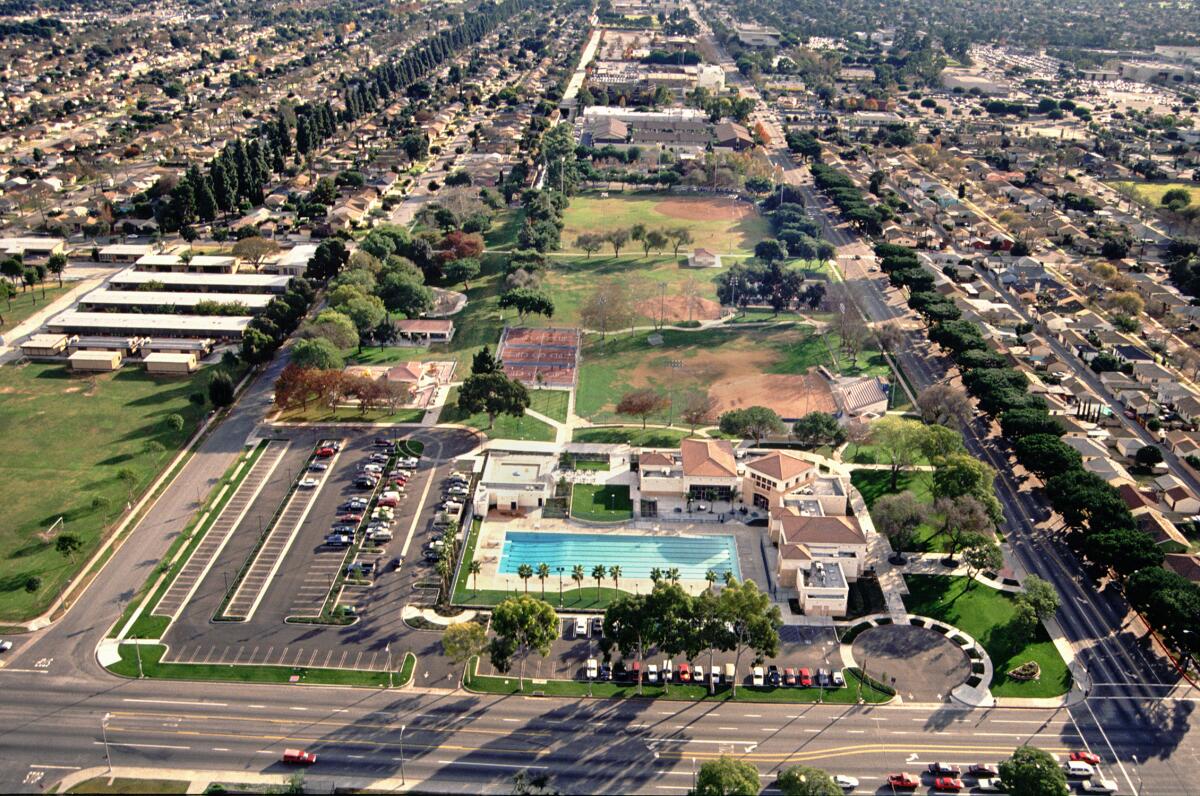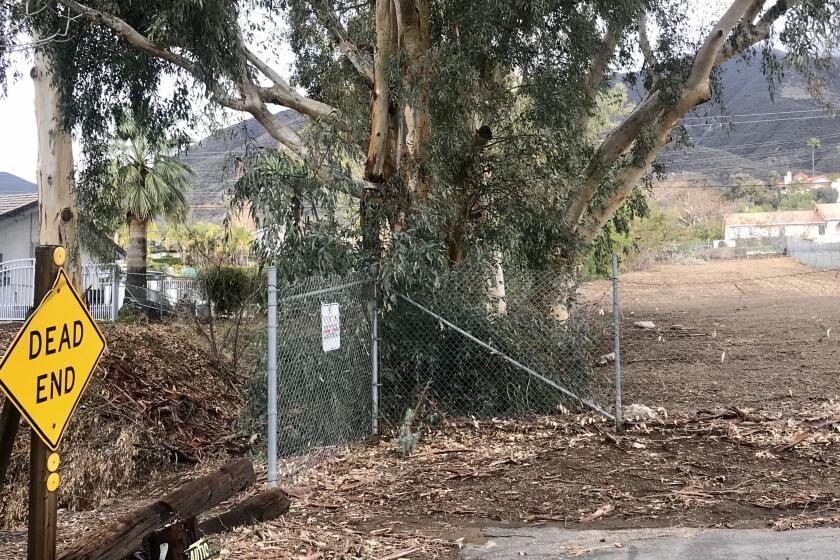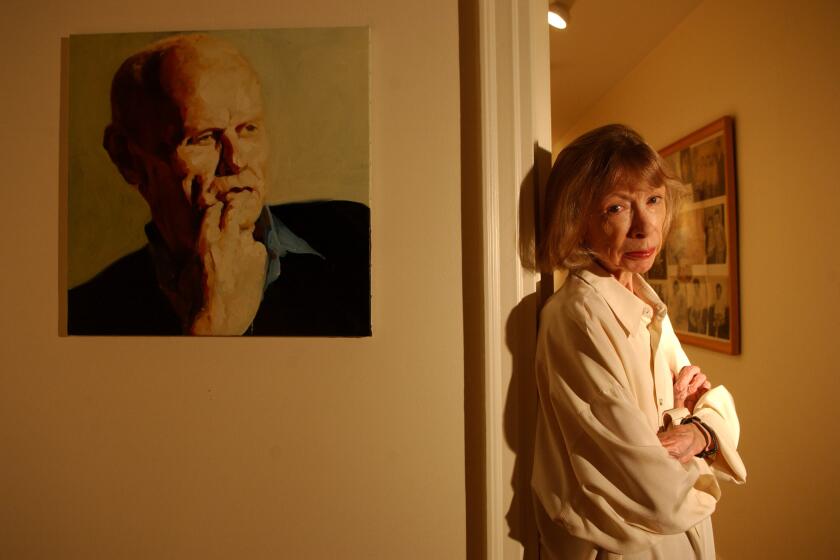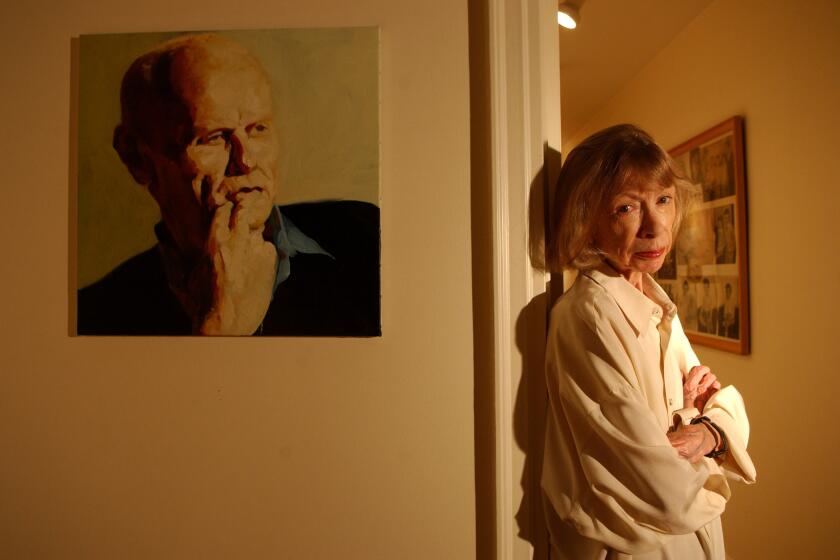Op-Ed: What Joan Didion wrote about Lakewood in 1993 wasn’t — isn’t — the only story to tell

I met Joan Didion in 1993, first in my office at Lakewood City Hall, and then on the following Saturday at the Chili’s restaurant on Lakewood’s Restaurant Row. Chili’s presents itself as both Mexican-ish and Southern-ish in a muddled Californian way. As a simulation of something not quite real to begin with, Chili’s was a perfect meeting place. Where else would you find Didion — the observer of non-places and of places turning into something spectral and terrible — except at a place so indefinite?
I was Lakewood’s public information officer when Didion came to town. She wanted to interview a city official about a local gang of “sex-for-points” high school boys whose arrest in March 1993 had captured the attention of Oprah Winfrey, the New York Times, Glamour, People, Newsweek and even Penthouse and the Doonesbury comic strip.
The articles, think pieces and cartoons had a common theme. As Jane Gross wrote in the New York Times, “The exploits of these boys ... have laid bare the underbelly of life in this suburb.”
Writer Susan Straight traverses a California different than the one Joan Didion observed yet views it through eyes partly focused by her Didion’s writing.
The point was this: The moral emptiness that some social critics said lay behind the bland facade of tract-house Los Angeles had revealed itself in misogyny, brute promiscuity and parental failure. The suburban sales pitch — better people in better homes — was another hollow lie from the wasteland of midcentury America.
The alternative — that “suburbia as hell” is an oversimplification, even a falsehood — did not seem to be in the conversation. Oprah, her producer told me, stood ready to come and heal the community.
Photos from the life of Joan Didion, who chronicled California, politics and sorrow in ‘Slouching Towards Bethlehem’ and ‘Year of Magical Thinking.’
Didion wasn’t interested in healing but in articulating apprehensions about the mass-produced suburbs that had absorbed millions of first-generation Californians since the end of World War II. I thought my parents and their friends knew what they had gained and lost in owning a small house on a small lot connected to square miles of just the same. As far as I could tell by their lives, they did not escape to their suburb, nor did they ever consider escaping from it. More men than just my father have said to me that living in Lakewood, where I live still, gave them a life made whole.
I told Didion this and what I thought the future of Lakewood might be. Small, birdlike, her questions barely audible, she noted down what I said.
The meeting at Chili’s, a few days later, was unplanned. I was with a friend whose midcentury upbringing was similar to mine. I had shared changing demographics and local history with Didion; my friend emphasized what aerospace workers experienced. He thought that the power of a few large employers to make or unmake suburban lives had distorted the stories of his boyhood. Didion made his observation the conclusion of the essay she came to Lakewood to write.
Without doubt, 1993 was a hard year for families that depended on a paycheck from the defense industry. The collapse of the Soviet Union had led to cutbacks in military orders. Consolidation among aerospace companies had begun, along with the migration of good, unionized jobs to Texas and other southern states. Some commentators pointed to these disruptions as prerequisites for the moral failings that afflicted the sex-for-points boys and their parents.
Didion saw ominous effects and offered a sweeping diagnosis. She thought that the conditions of suburban life, the economics of defense contracting, the way in which their jobs robbed men of agency, had given them nothing to hand on to their sons, and made all of them, fundamentally, un-Californian, not like Didion’s Sacramento ancestors. Didion regretted that those who had come in Chevrolets in the 1950s and 1960s weren’t as truly Californian as those who came as pioneers in the 1840s in Conestoga wagons.
Didion doubted the authenticity — and ultimately, the value — of what the Chevrolet Californians had made of themselves and their tract-house suburbs.
She was unsparing in her July 1993 New Yorker piece. The aerospace suburbs had “managed to increase the proletariat and simultaneously, by calling it middle-class, to co-opt it,” Didion wrote. “What had it cost to create and maintain an artificial ownership class? ... What happens when that class stops being useful?”
The celebrated prose stylist, novelist and screenwriter who chronicled American culture and consciousness died Dec. 23 at 87.
Somewhere there had been genuine Californians, competent realists all, a class of inheritors of something of substance as her parents had been, not like “the new people ... ignorant of our special history, insensible to the hardships endured to make it, blind not only to the dangers the place still presented but to the shared responsibilities its continued habitation demanded.”
Suburbanization had made California rich, Didion thought, but at the cost of creating the kind of people who lived in the kind of place she thought Lakewood was. Doom had been built into its grid of streets and three-bedroom, one-bath houses, she thought. False optimism had replaced the dread homebuyers ought to have felt.
The economic and social troubles of 1993 rippled through my community, as these things do, disordering the trajectories of lives and industries to the ruin of some. Some of the boys that had caught Didion’s attention eventually went to jail, but not for molesting girls. One was shot and killed in Huntington Beach. Manufacturing employment shifted to states with subsidies and without unions. Everyday life in Lakewood continued, with its usual mix of tragedies and joys.
When Didion’s New Yorker essay was repurposed in 2003 for her collection “Where I Was From,” very little of the narrative she had created in 1993 was updated, as if a decade hadn’t passed, as if the impending suburban doom were only delayed. It seemed to me then that certain apprehensions of Didion’s had hardened into dogma. Some aspects of California — of suburban Los Angeles, specifically — had become timeless, unmoored from evolving circumstance. It seemed that my neighbors were still not agents of their own history, that someone from somewhere harder and colder would tell their stories for them.
When Didion left my office after her interview in 1993, as she rose and turned to leave, I stopped her and asked if I might give her some pages of the memoir I was writing. She graciously took them. She quoted from them in her essay. She later allowed me to use a very generous comment she made about my work, and her endorsement would help me find a publisher one day. I was and am grateful for her kindness, but I told a story different from hers, of the positive intersection of place and personality.
Perhaps I was (and remain) just another dreamer of the golden dream, capable of nothing more than love for the California I know. Perhaps Joan Didion saw some other California in 1993, not the place where she was from, but something to be left by the side of the trail leading away from here.
D.J. Waldie is the author of “Holy Land: A Suburban Memoir” and “Becoming Los Angeles: Myth, Memory, and a Sense of Place,” among other books.
More to Read
A cure for the common opinion
Get thought-provoking perspectives with our weekly newsletter.
You may occasionally receive promotional content from the Los Angeles Times.













